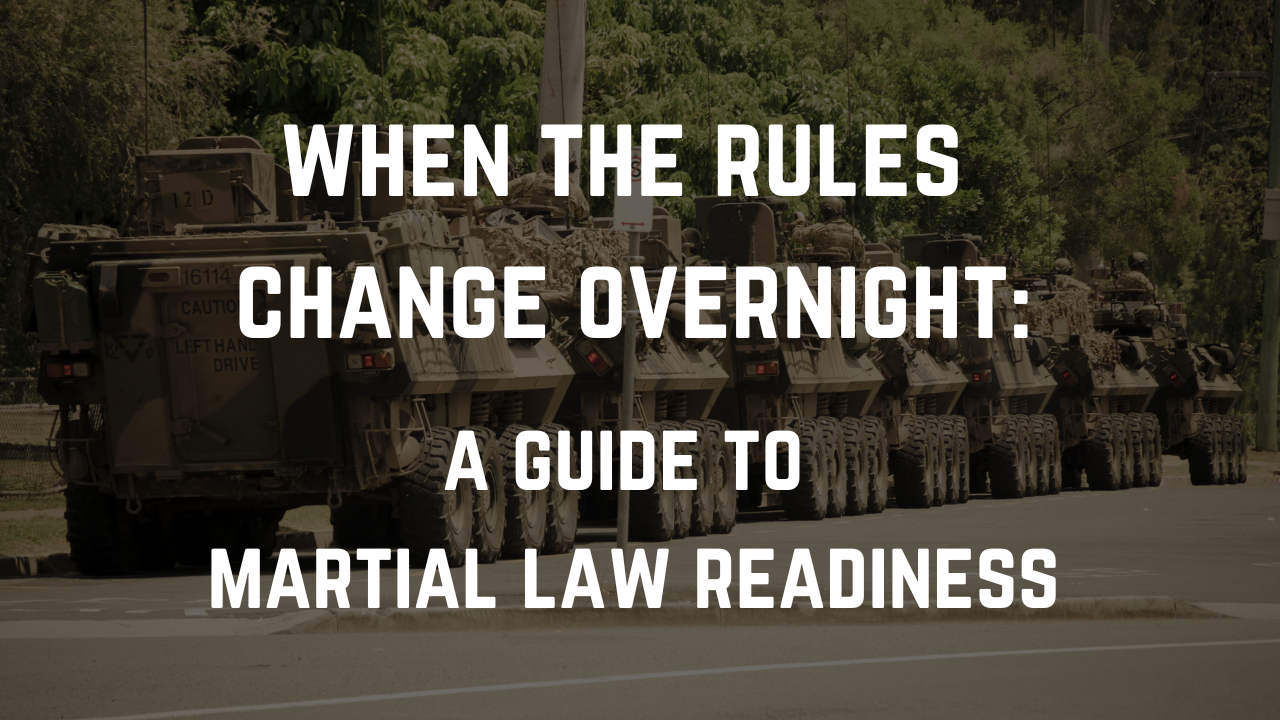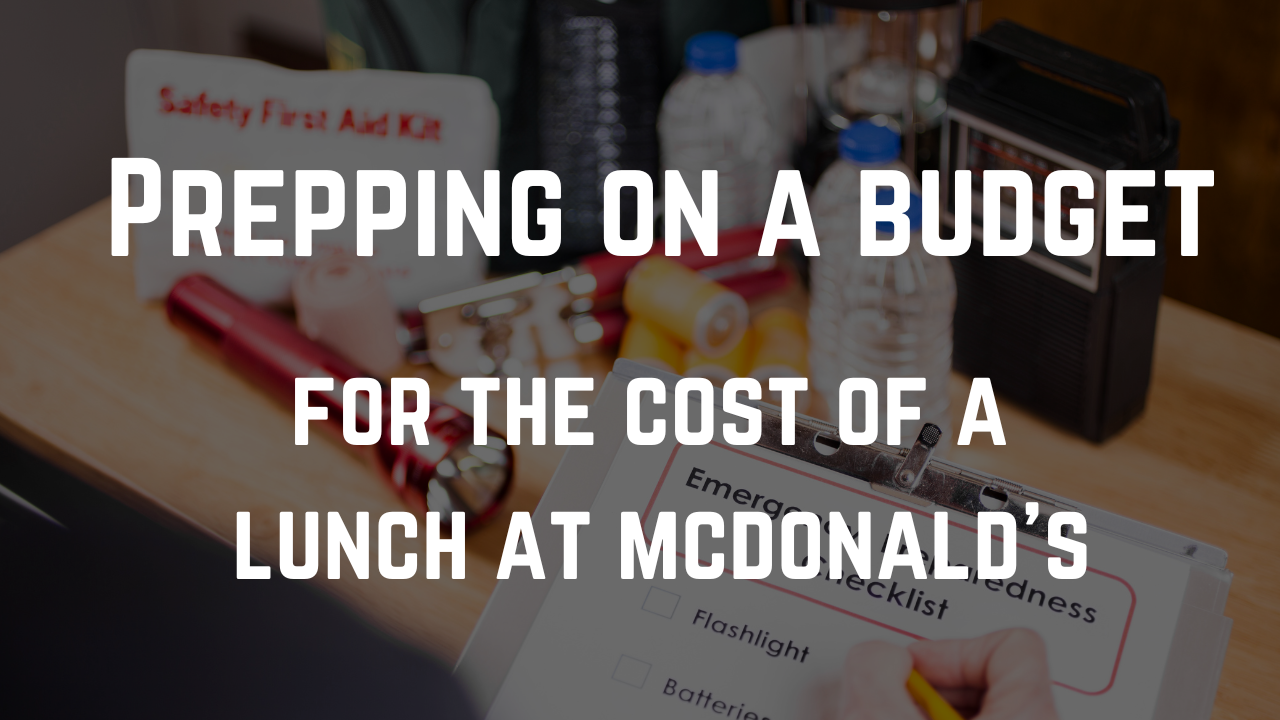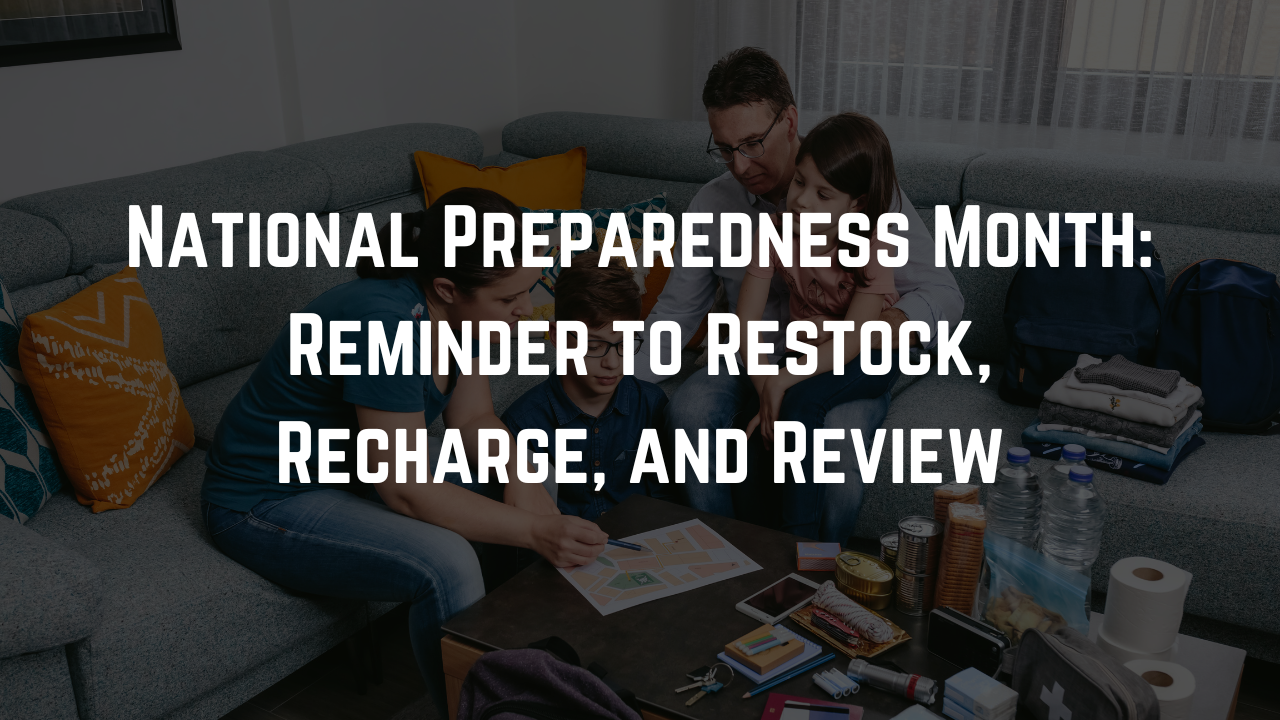National Preparedness Month: Annual Reminder to Restock, Recharge, and Review
September is the perfect time to check supplies, update safety systems, and refresh your family’s emergency plan.
Each year, FEMA and other emergency management agencies designate National Preparedness Month to serve as a timely reminder that preparedness isn’t something you do once and forget about, it’s a habit worth revisiting regularly.
From updating your go-bag to testing smoke alarms, this month offers a chance to make sure your household is ready for whatever comes next.
Time to Refresh Your Supplies
Your emergency kit is only as good as what’s inside it. If you don’t have one yet, take a look at our blog here. This month, take time to:
- Check expiration dates on canned goods, medications, and pantry staples. Replace anything outdated. If canned goods are nearing expiration and you won’t use them in time, consider donating them to a local food pantry or shelter. Just be sure to donate before the expiration date so they can still be safely distributed.
- Rotate water supplies. Refill collapsible containers or replace bottled water that’s been stored too long.
- Restock essentials like batteries, flashlights, first aid items, and hygiene supplies.
- Add overlooked items, such as pet food, baby formula, or backup chargers.
Check Your Home Safety Systems
Preparedness extends beyond your go-bag — it’s also about keeping your home ready every day. Be sure to:
- Replace smoke and carbon monoxide detector batteries. Press the test button to confirm they’re working, and replace batteries even if they haven’t started chirping. If your detectors are more than 10 years old, it’s time to replace the units entirely.
- Inspect fire extinguishers. Make sure they’re easy to access, the gauge reads in the green, and the safety pin and tamper seal are intact. If you don’t already have extinguishers in the kitchen, garage, and near bedrooms, now’s the time to add them.
- Swap out filters. Clean or replace HVAC, air purifier, and water filters to ensure good air quality and safe drinking water. A clogged filter can reduce efficiency and leave you vulnerable if an emergency disrupts utilities.
- Review safety lighting. Confirm flashlights and lanterns are working and that spare batteries are stored nearby. Outdoor motion-sensor lights should also be tested to make sure your property is well-lit in a power outage.
Review and Update Your Family Plan
Preparedness works best when everyone in your household knows what to do. Use this month to:
- Update emergency contacts. Double-check that phone numbers for family, friends, schools, and workplaces are current. Make sure each household member has a written copy in their wallet, backpack, or go-bag. Download an emergency contact template here.
- Choose meeting places. Create a tiered system of safe, familiar spots where your family can reunite depending on the emergency scenario:
- Just outside your home
- Outside your neighborhood
- Outside your city
- A few hours away
- See our blog for how to create an evacuation plan.
- Plan for special needs. Account for children, older adults, pets, or anyone with medical requirements. Keep extra medication, pet food, or mobility items in your kit and update them regularly.
- Talk through scenarios. Discuss what to do if phones are down, if you’re separated during work or school hours, or if you need to evacuate quickly.
Try Simple Preparedness Drills
Practicing doesn’t have to feel overwhelming (or boring). Short, low-stress drills help everyone in your household build confidence and muscle memory so they’ll know what to do if an emergency really happens.
Whether you have roommates, a family with kids, or senior parents living with you, here are some you can try:
- Practice without power. Make it fun: try a dinner, bedtime routine, or bathtime with the kids using only flashlights or lanterns. You’ll quickly see what works, what doesn’t, and how creative your family can be when the lights go out.
- Fire Drill: Pick a smoke alarm and pretend it just went off. Everyone practices leaving the house quickly and meeting at your designated spot outside.
- Shelter-in-Place Drill: Choose a safe room (ideally with no windows) and have everyone gather there with flashlights, snacks, and water. This is especially useful for severe weather.
- Evacuation Drill: Pack go-bags, load them into the car, and time how long it takes to be “ready to roll.” It’s a great way to see if your supplies are actually portable.
- Communication Drill: Have family members pretend they’re in different places (work, school, errands). Practice who calls whom and where to meet if phones are down.
- First Aid Practice: Try a refresher on simple skills like using bandages, the recovery position, or knowing where the first aid kit is.
These quick exercises not only test your plan but also build familiarity. By practicing ahead of time, everyone will know what to do if the power goes out, a fire breaks out, or another unexpected situation arises.
Try picking one or two each weekend this month to build preparedness into your household’s routine.
Build the Habit
Think of National Preparedness Month as your annual check-up for readiness. Just as you service your car or change your smoke detector batteries when the clocks shift, making preparedness part of your yearly rhythm ensures your family is always a little more resilient.
New to preparedness?
If you haven’t started building your emergency plan or kit yet, National Preparedness Month is the perfect time to begin. Download the 72-Hour Emergency Kit Checklist here.
Start small — add a few extra food and water items to your shopping list, write down key contacts, or test your smoke detectors. Even one simple step today makes you more prepared than you were yesterday.


